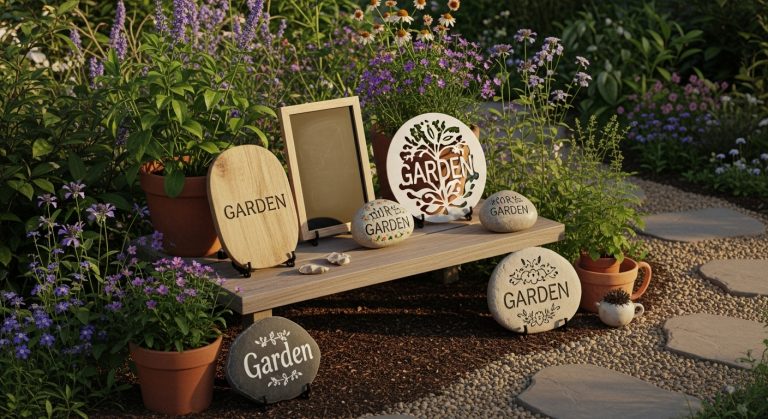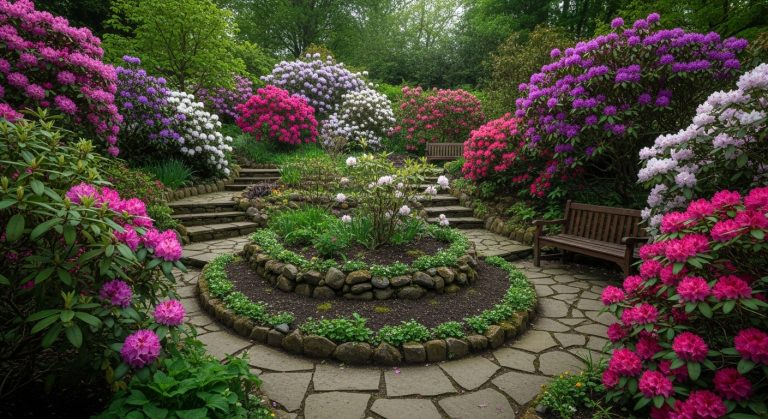Garden Tiles Outdoor Ideas: 15 Creative Ways to Transform Your Yard
When it comes to designing an outdoor space, the right tiles can completely change the vibe. Imagine stepping into your backyard and being greeted by beautiful, patterned tiles underfoot — suddenly, it doesn’t just feel like a yard, it feels like an extension of your home, a place where you actually want to linger with a cup of coffee or a glass of wine. Outdoor tiles aren’t just practical; they’re an opportunity to make a statement, experiment with textures, and create zones for lounging, dining, or gardening.
I’ll be honest: I used to think garden tiles were just “flooring for outdoors.” But after experimenting with different colors, shapes, and layouts, I realized how transformative they can be. From cozy patios to modern terraces, tiles can visually expand a space, define pathways, and even highlight plants and water features. Whether you prefer rustic charm, contemporary minimalism, or vibrant Mediterranean flair, there’s a tile solution for every garden style.
So, if you’re ready to rethink your backyard, patio, or terrace, here are 15 garden tiles outdoor ideas that blend beauty, functionality, and creativity — all aimed at making your garden a place you actually want to spend time in.
1. Classic Terracotta Tiles for Warmth

Terracotta has been around forever for a reason — it’s warm, inviting, and timeless. Using terracotta tiles for your garden patio instantly creates a Mediterranean-style vibe. The earthy reds and oranges complement greenery beautifully, especially when paired with potted plants and rustic furniture.
Pros:
- Creates a warm, cozy atmosphere perfect for casual lounging.
- Durable and weather-resistant, especially in dry climates.
- Complements a variety of garden styles, from cottage to modern rustic.
Cons:
- Porous material may stain if not sealed.
- Can be slippery when wet if left untextured.
Takeaway: Terracotta tiles are classic for a reason — they bring warmth and character to outdoor spaces without much fuss.
2. Porcelain Tiles for Low-Maintenance Style
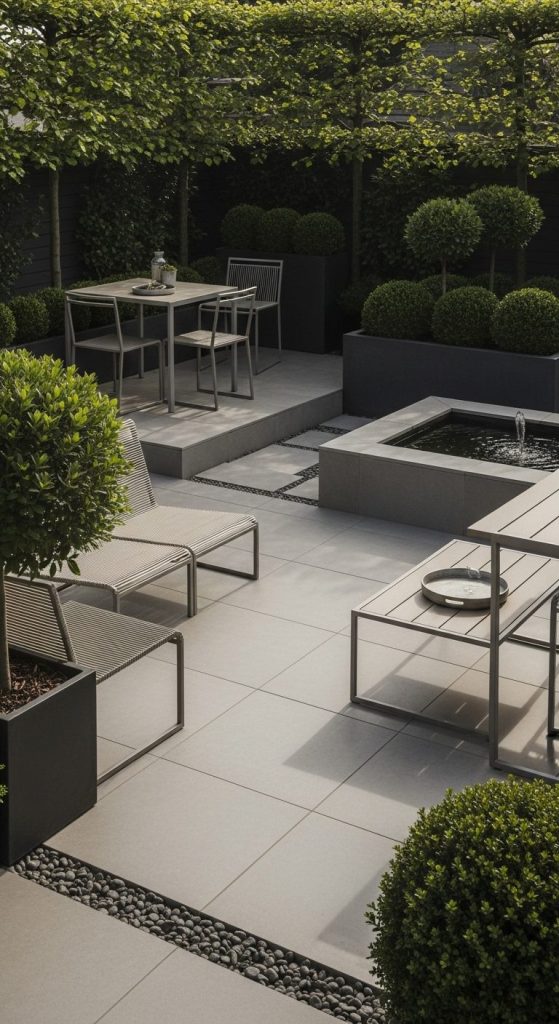
Porcelain tiles are a modern favorite for outdoor patios. They’re sleek, durable, and low-maintenance — perfect for homeowners who love a polished look but don’t want to spend hours scrubbing.
Pros:
- Resistant to stains, scratches, and moisture.
- Wide range of colors and finishes, including wood-look porcelain.
- Can mimic natural stone without the heavy upkeep.
Cons:
- Can feel cold underfoot, especially in the morning or evening.
- Installation can be more expensive than basic concrete pavers.
Takeaway: Porcelain tiles are a practical, stylish choice for busy outdoor spaces where you want a contemporary feel.
3. Mosaic Tiles for Artistic Flair
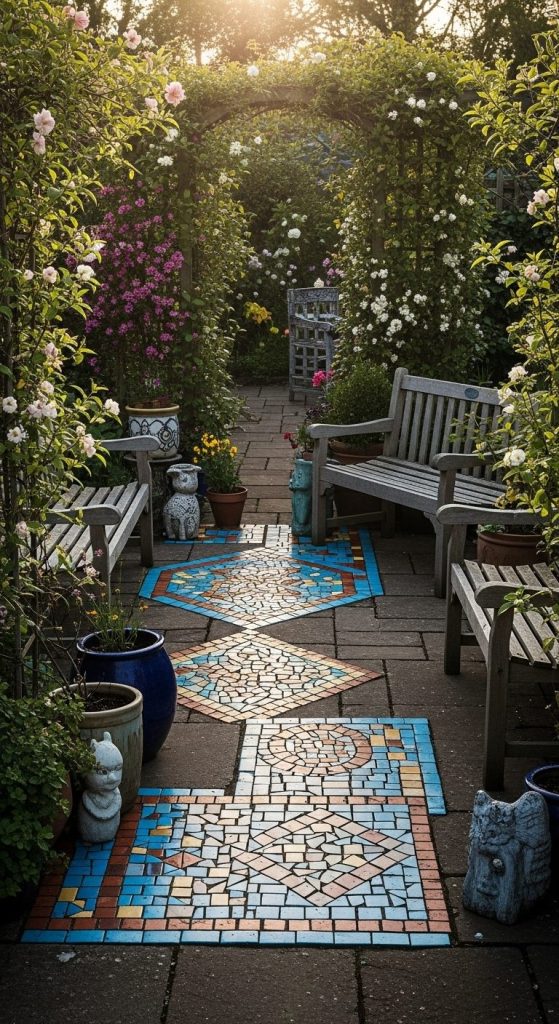
If you want to add a burst of creativity, consider mosaic tiles. Tiny pieces in vibrant colors can create patterns, borders, or even custom artwork in your garden.
Pros:
- Endless design possibilities for unique, personal touches.
- Can define areas like seating zones or pathways visually.
- Adds a playful, colorful accent that contrasts with greenery.
Cons:
- Can be labor-intensive to install if doing a custom pattern.
- Grout lines require regular maintenance to prevent dirt buildup.
Takeaway: Mosaic tiles are perfect for gardeners who want their patio or walkway to double as an art piece.
4. Concrete Tiles for Modern Minimalism
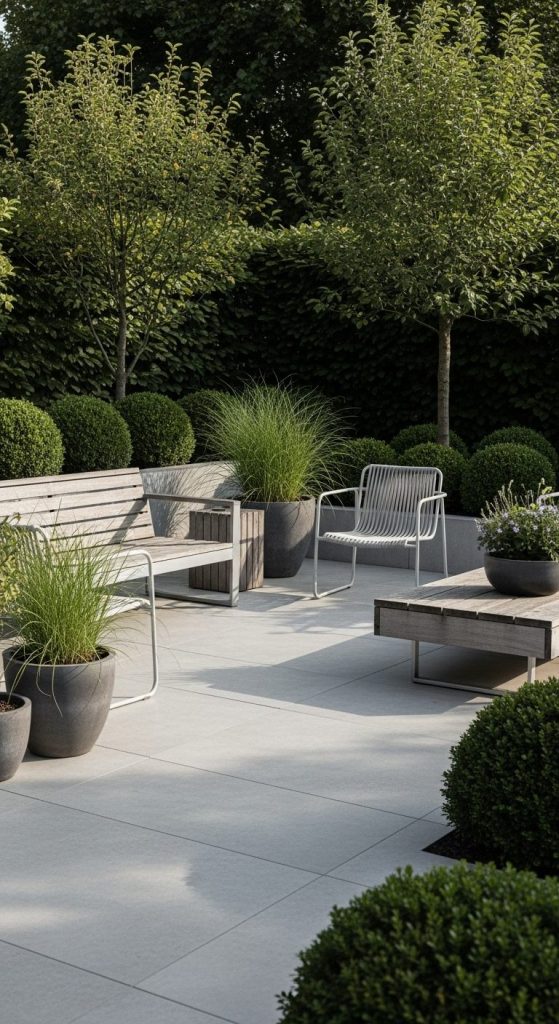
Concrete tiles aren’t just for industrial lofts anymore. Smooth, square concrete tiles can create a clean, minimalist look in your backyard, letting plants and furniture shine without distraction.
Pros:
- Highly durable and long-lasting.
- Can be colored or textured to suit different designs.
- Perfect for modern, minimalist, or urban gardens.
Cons:
- Can feel stark if not softened with plants or rugs.
- Prone to cracking if the base isn’t prepared properly.
Takeaway: Concrete tiles are ideal for contemporary outdoor spaces that value simplicity and elegance.
5. Patterned Cement Tiles for Vintage Charm
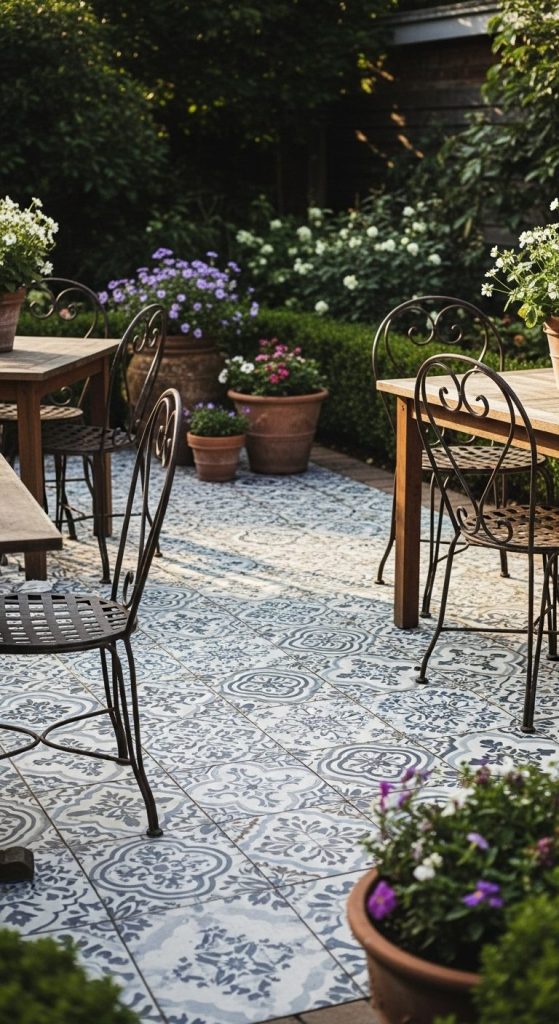
Patterned cement tiles are back in style, giving your outdoor space a vintage yet vibrant personality. Bold patterns can make a small patio feel lively and cozy.
Pros:
- Adds character and visual interest immediately.
- Works well with neutral walls and furniture as a focal point.
- Often handmade, giving each tile a unique charm.
Cons:
- Porous surfaces require sealing to prevent staining.
- Can be slippery when wet unless textured.
Takeaway: Cement tiles inject personality into a patio or pathway and are perfect for retro-inspired or eclectic gardens.
6. Natural Stone Tiles for Timeless Elegance
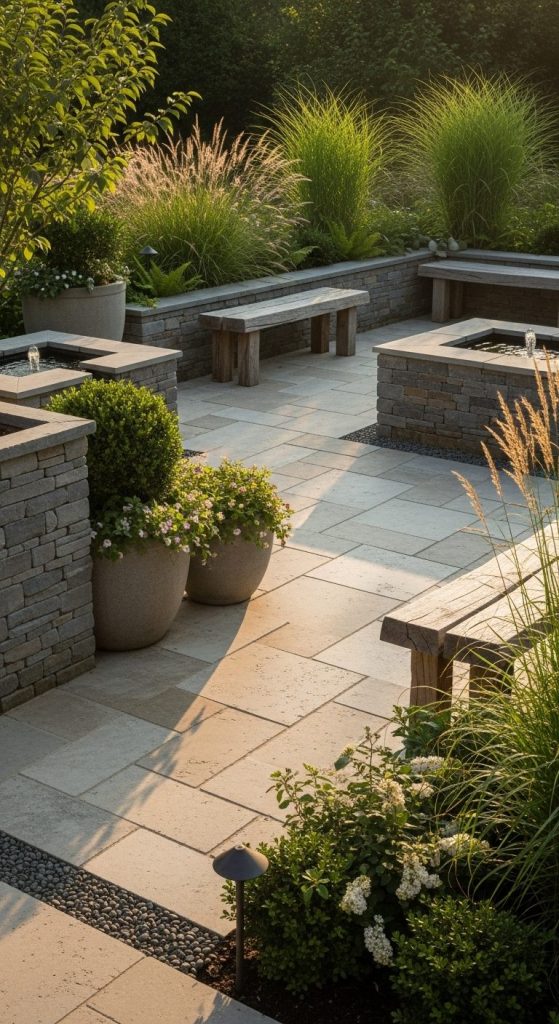
Using natural stone tiles like slate, travertine, or limestone gives a garden a luxurious, timeless appeal. Each stone is unique, which adds organic variation that artificial tiles can’t replicate.
Pros:
- Extremely durable and weather-resistant.
- Unique textures and natural color variations.
- Works beautifully with water features or stone planters.
Cons:
- Can be pricey, especially for high-end varieties.
- Requires occasional sealing to prevent moss or discoloration.
Takeaway: Natural stone tiles are a long-term investment that elevates any garden or outdoor living space.
7. Wooden-Look Tiles for Rustic Appeal
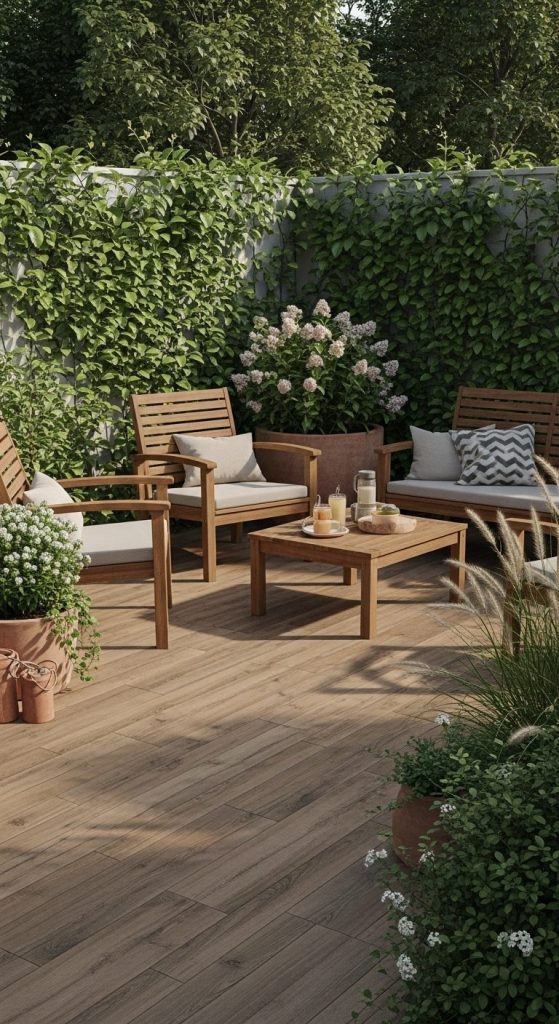
If you love the warmth of wood but want the durability of tile, wooden-look ceramic or porcelain tiles are a smart compromise. They mimic the texture and color of natural timber without rotting or warping.
Pros:
- Offers rustic charm without the maintenance of real wood.
- Resistant to moisture and insects.
- Can seamlessly integrate with decks or garden furniture.
Cons:
- Can be more expensive than regular tiles.
- Some finishes can be slippery when wet.
Takeaway: Wood-look tiles give your outdoor space a cozy, cabin-like vibe while keeping maintenance low.
8. Geometric Tiles for Contemporary Style

Bold geometric tiles instantly modernize a patio or walkway. Think hexagons, chevrons, or diamond patterns — they make any small outdoor space feel dynamic and stylish.
Pros:
- Creates visual interest and draws the eye.
- Works well for urban or minimalist gardens.
- Can break monotony in large paved areas.
Cons:
- Complex layouts may require professional installation.
- Patterns may overwhelm very small spaces if not balanced with greenery.
Takeaway: Geometric tiles are perfect for adding a modern, architectural touch to your outdoor flooring.
9. Pebble-Embedded Tiles for Texture
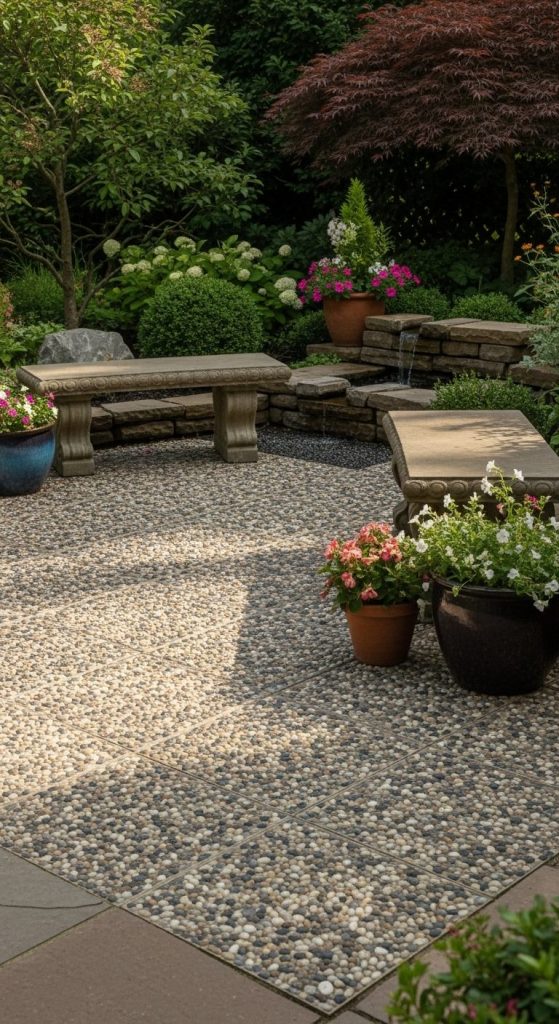
Tiles embedded with small pebbles add tactile texture underfoot and create a natural, relaxed feel. Perfect for garden paths or near water features.
Pros:
- Adds grip, reducing slip hazards.
- Natural look blends beautifully with plants and stones.
- Low-maintenance and durable.
Cons:
- Can be uncomfortable to walk barefoot if pebbles are sharp.
- Cleaning between pebbles may require pressure washing.
Takeaway: Pebble tiles combine functionality and aesthetics, making pathways safer and visually interesting.
10. Recycled or Eco-Friendly Tiles
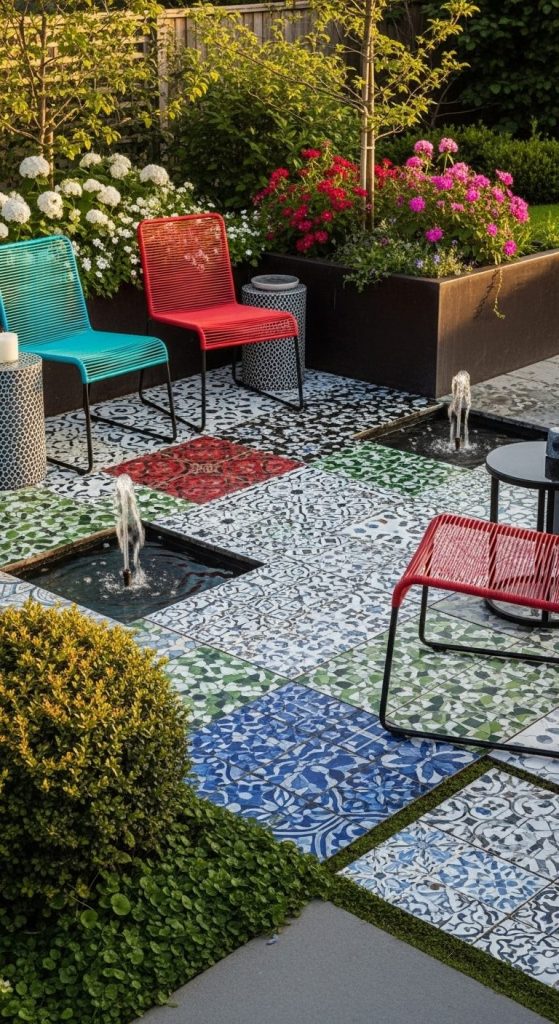
For eco-conscious gardeners, recycled glass, porcelain, or ceramic tiles provide a sustainable choice. Many brands now offer colorful, durable options that reduce environmental impact.
Pros:
- Environmentally friendly and reduces waste.
- Often vibrant and artistic, perfect for statement patios.
- Can be as durable as conventional tiles.
Cons:
- May be limited in size or shape compared to standard tiles.
- Can be costlier depending on source.
Takeaway: Eco-friendly tiles let you create a gorgeous garden while caring for the planet.
11. Mosaic Pebble Patterns for Poolside Spaces

For poolside patios, mosaic pebble tiles are visually appealing and practical. The small pebbles create traction and a relaxed, resort-like feel.
Pros:
- Improves grip around wet areas.
- Adds natural charm with varied colors.
- Can create artistic pool borders or focal points.
Cons:
- Installation is labor-intensive.
- Pebbles may loosen over time if adhesive isn’t strong.
Takeaway: Mosaic pebble tiles are perfect for outdoor water-adjacent areas where aesthetics and safety matter.
12. Chalkboard or Writable Tiles for Fun
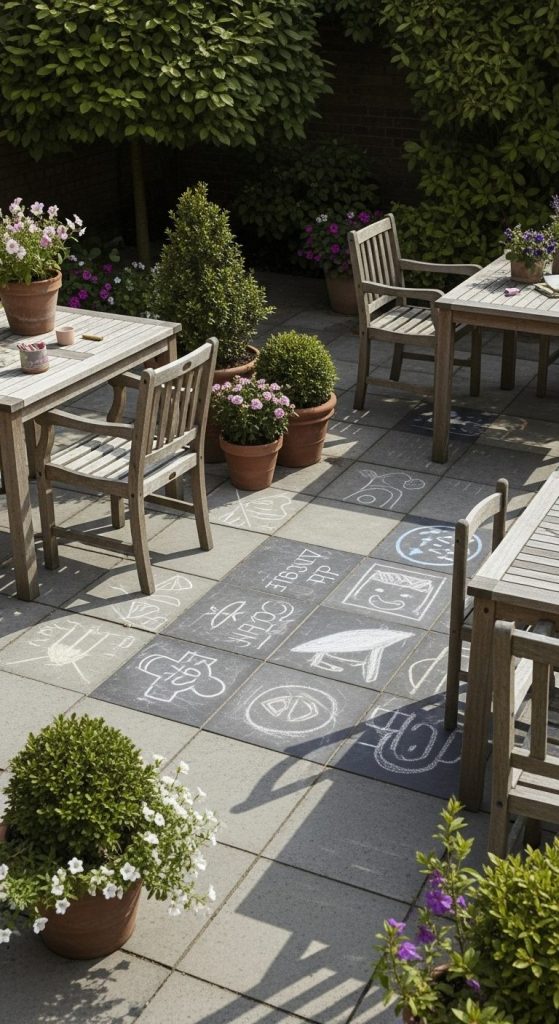
Yes, outdoor chalkboard tiles exist! They let you write seasonal messages, menus for garden parties, or just doodle with kids.
Pros:
- Adds playful interaction in family gardens.
- Can be updated seasonally or for events.
- Unique conversation starter for guests.
Cons:
- Requires regular cleaning to prevent ghosting.
- Limited styles and colors compared to standard tiles.
Takeaway: Writable tiles add a quirky, personal touch and engage kids or guests creatively.
13. Herringbone or Basket-Weave Patterns
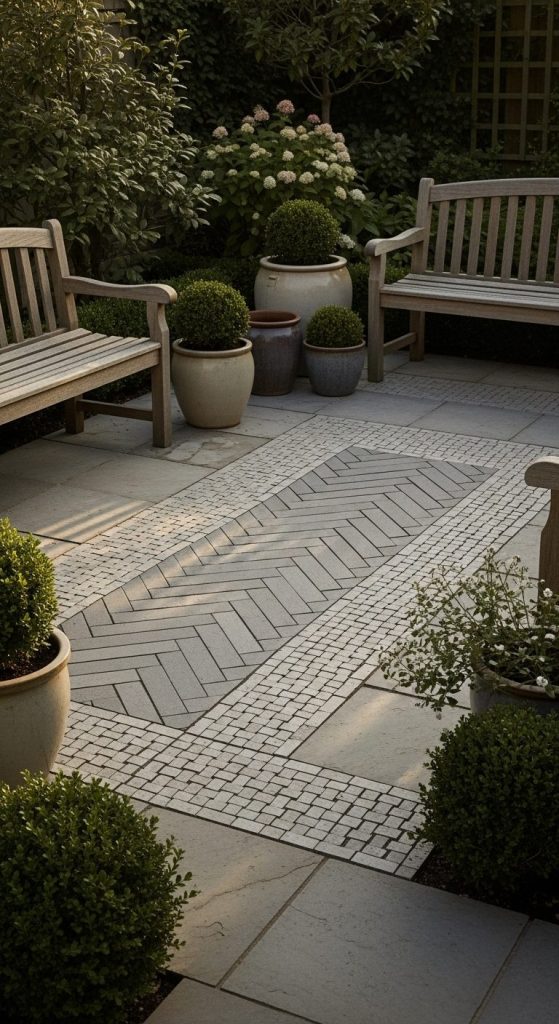
Arranging rectangular or square tiles in herringbone or basket-weave patterns adds sophistication and movement to a patio or walkway.
Pros:
- Classic design that elevates outdoor aesthetics.
- Creates a sense of flow in long or narrow areas.
- Works well with wood-look, stone, or concrete tiles.
Cons:
- Pattern complexity may require professional installation.
- Cutting tiles for edges can be time-consuming.
Takeaway: Patterned layouts turn ordinary tiles into a statement, giving your garden design a custom look.
14. Gravel-Integrated Tiles for Green Patches
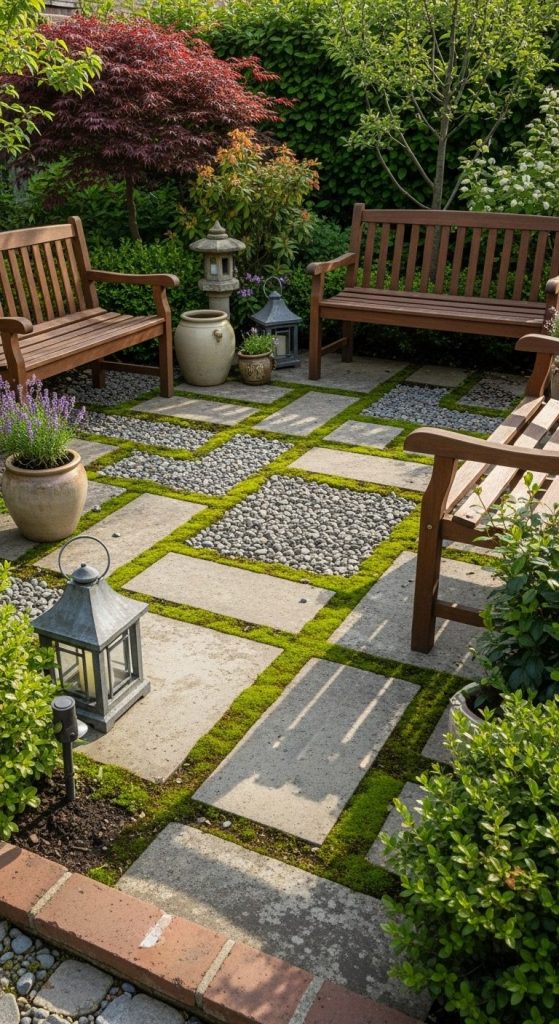
Tiles spaced with gravel or moss in between create a soft, green-friendly effect, blending hardscape with soft landscape.
Pros:
- Allows water to permeate for nearby plants.
- Adds visual contrast with greenery and stones.
- Easy to expand or change layout later.
Cons:
- Gravel may shift over time, requiring occasional adjustment.
- Moss may require consistent moisture to thrive.
Takeaway: Gravel-integrated tiles are perfect for creating paths or patios that feel connected to nature.
15. Bold Colored Tiles for a Statement Patio

Sometimes, the simplest way to make an impact is with color. Vibrant reds, blues, or yellows can transform your patio into a cheerful gathering spot.
Pros:
- Adds instant energy and personality.
- Creates a focal point for garden seating areas.
- Works well with neutral furniture for contrast.
Cons:
- Strong colors may fade under sun exposure over time.
- May feel overwhelming if used over very large areas.
Takeaway: Bright, bold tiles are perfect for gardeners who want their patio to reflect personality and joy.
Conclusion
Outdoor tiles are so much more than just practical flooring — they’re a design tool, a mood setter, and a way to express creativity in your garden. From rustic terracotta to bold mosaics, natural stone to eco-friendly options, each type of tile can transform a patio, walkway, or terrace into a space that’s inviting, functional, and stylish.
When choosing tiles, think about durability, maintenance, and how they complement plants, furniture, and overall garden style. Don’t be afraid to mix patterns, textures, and colors — even small touches like a herringbone pattern or pebble inset can elevate the entire space. IMO, the best outdoor gardens are those where the floor itself tells a story, guiding visitors through paths, seating areas, and cozy corners while highlighting the beauty of nature.
So whether you want a serene retreat, a playful family area, or a modern minimalist patio, these 15 garden tiles outdoor ideas give you a roadmap to create a Pinterest-worthy garden without breaking the bank.

William Martin is a passionate bowler who spends most of his weekends playing the sport. With years of intense experience under his belt, William decided to share his knowledge by creating BOWLING OCEAN. Join me on this journey to explore the world of bowling and discover the tips and tricks to becoming a pro.





